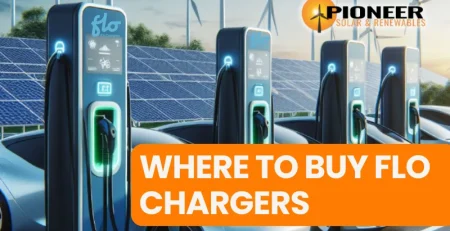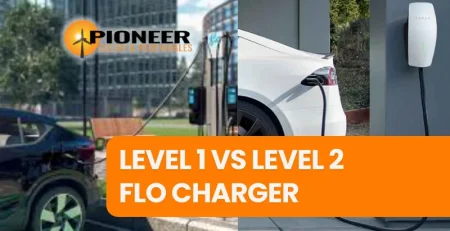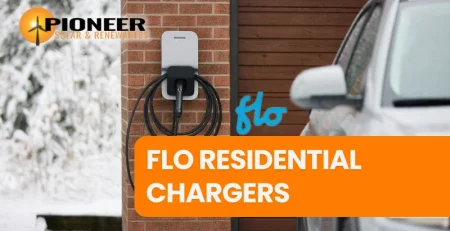
Making Informed Choices: FLO Chargers vs. Generic Alternatives
Cynthia2024-05-20T08:14:54-06:00What did the last post discuss?
The previous post i.e. Part 4 is a blog dedicated to the exploration of FLO Residential Chargers. You can find out why they are a game changer and whether you need it or not. It has also discussed the features of two well-known FLO residential chargers.
This post talks about
FLO chargers and Generic Chargers. This post is the final post and hence, will be discussing a basic overview of the benefits and costs of FLO and Generic Chargers, thus weighing them against each other. Scroll down to know more.
Comparing the costs and benefits of FLO chargers with generic alternatives.
When comparing FLO chargers to generic alternatives, several essential factors come into play:
What are the benefits of FLO Chargers?
Intelligent Features: FLO chargers often include innovative functionalities like mobile app connectivity for remote scheduling and monitoring, enhancing convenience.
Quality and Reliability: FLO chargers are renowned for their sturdy construction and reliability, designed to withstand harsh weather conditions, ensuring long-term durability.
Brand Reputation: FLO is a well-established brand in the EV charging industry, known for its quality and service, which instills user confidence.
What are the benefits of Generic Alternatives?
Reliability and Quality: The quality and reliability of generic chargers can vary, and some may not withstand extreme weather conditions, potentially necessitating premature replacements.
Limited Features: Generic alternatives may need more intelligent features and user-friendly interfaces of FLO chargers.
Warranty and Support: Generic chargers may need more warranties and customer support than established brands like FLO.
FLO Charging Costs
Higher Initial Cost: FLO chargers typically have a higher upfront price tag, which might deter budget-conscious consumers.
Installation Expenses: Installing FLO chargers might require professional electrician services, adding to the overall cost.
Costs of Generic Alternatives
Lower Initial Cost: Generic chargers are often more budget-friendly initially, appealing to a broader range of consumers.
Basic Charging Functionality: Generic chargers offer essential charging functionality without the added cost of intelligent features, catering to those who don't require advanced capabilities.
In summary, FLO chargers offer advanced features, quality, and a strong brand reputation but come at a higher cost. Generic alternatives are more budget-friendly but may sacrifice quality and features. The choice ultimately depends on your specific requirements, budget constraints, and the importance you place on convenience and long-term reliability.
Installation Tips and Best Practices
Installing FLO electric vehicle (EV) chargers requires careful planning and adherence to best practices for optimal performance and safety. Here are some essential installation tips and best techniques for FLO chargers:
- Site Assessment: Before installation, conduct a site assessment to determine the ideal location for the charger. Consider factors like proximity to the power source, parking convenience, and user accessibility.
- Electrical Capacity: Ensure your electrical system can support the charger's power requirements. It's essential to have a dedicated circuit and the necessary amperage for fast and reliable charging.
- Permitting and Compliance: Check local regulations and obtain necessary permits for EV charger installation. Ensure compliance with local building codes and safety standards.
- Professional Installation: It's advisable to hire a certified electrician. They can safely connect the charger to the electrical supply and ensure it meets all safety requirements.
- Proper Mounting: Mount the charger securely on a durable surface, like a concrete pad or wall, to prevent any vibration or damage during charging.
- Weather Protection: If the charger is exposed to the elements, consider weatherproofing measures, such as a protective cover or enclosure. It protects the charger and ensures safe operation in various weather conditions.
- User-Friendly Placement: Install the charger at a comfortable height and location for users. Clear signage and proper cable management can enhance the user experience.
- Networking and Smart Features: If your FLO charger has networking capabilities, connect it to a network for remote monitoring and management. It allows you to track usage, perform updates, and ensure the charger's availability.
- Regular Maintenance: Establish a routine maintenance schedule to inspect and clean the charger, check cable integrity, and address any issues promptly.
By following these installation tips and best practices, you can ensure that your FLO charger is installed safely, functions optimally, and provides a positive experience for EV users.
The Ending Note
Choosing between FLO chargers and generic alternatives boils down to preferences and budget. FLO offers advanced features and quality but at a higher cost. Generic options are budget-friendly but may lack some features. Consider your needs, budget, and desired reliability for the ideal electric vehicle charging solution.












Leave a Reply